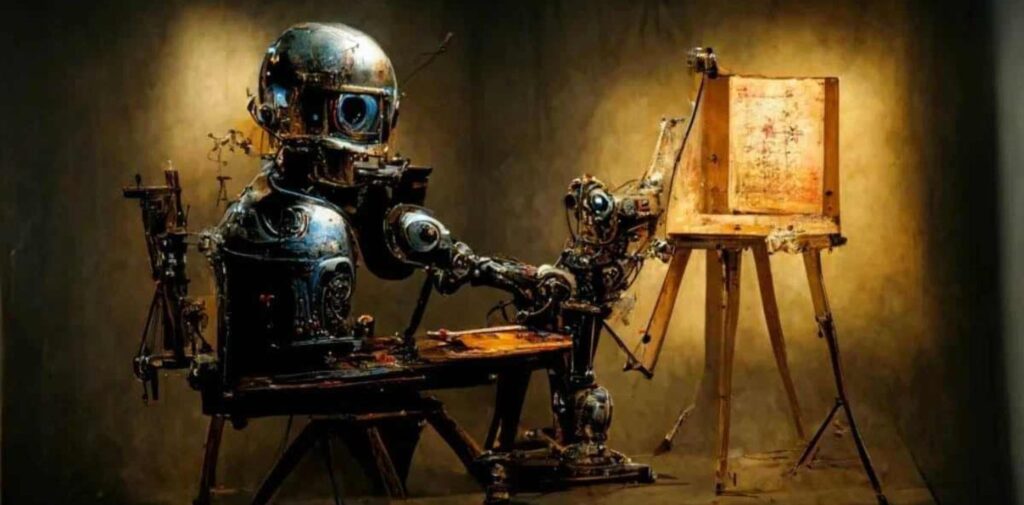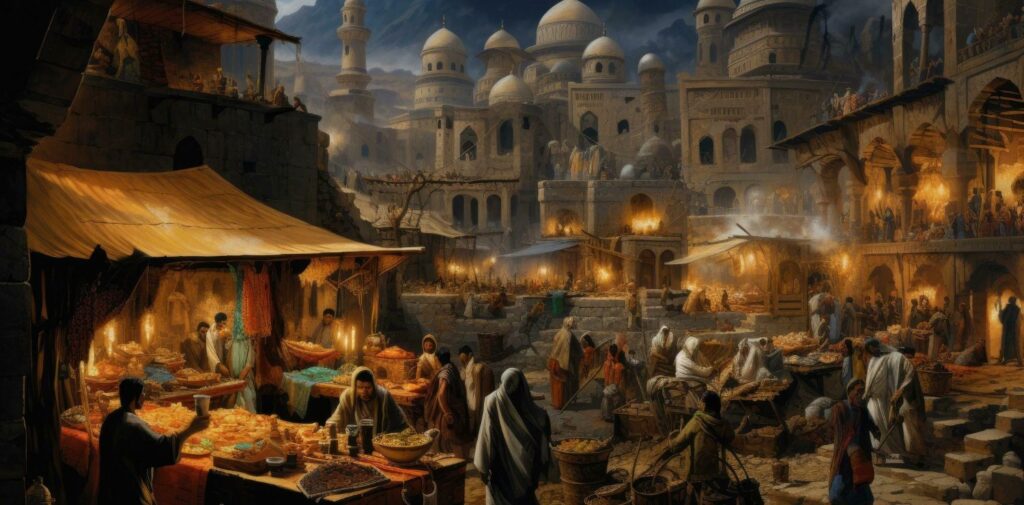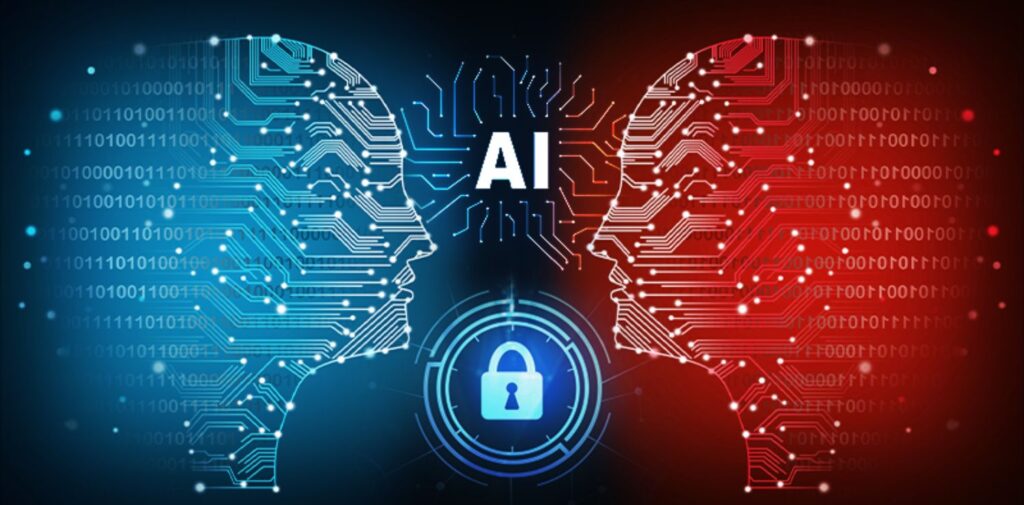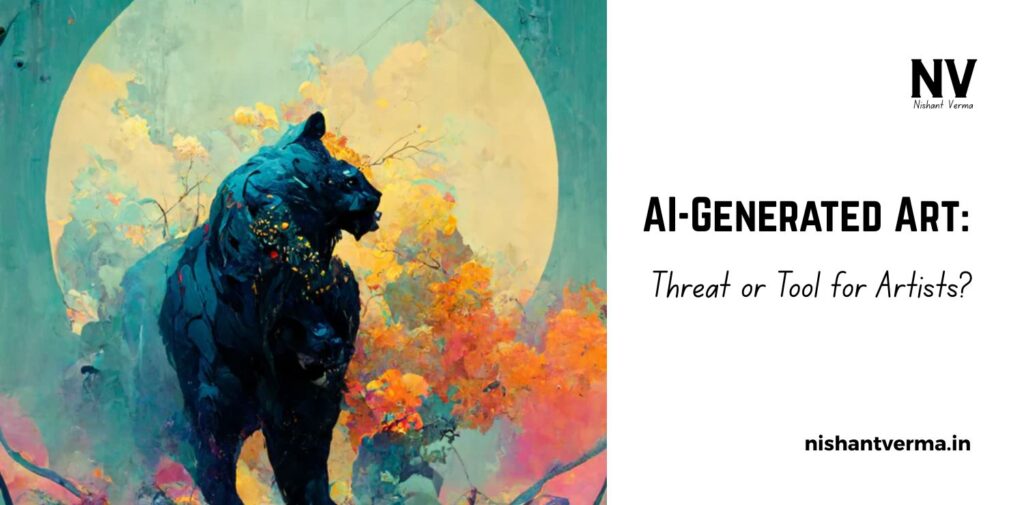In recent years, the world has witnessed a revolution in the field of art. But this time, the change is not coming from a human hand with a brush or pencil – it’s coming from artificial intelligence. AI-generated art is becoming popular around the globe, including in India. With the help of software and machine learning, computers can now create paintings, music, poetry, and even full-length films. But this raises a big question – is AI-generated art a threat to human artists, or is it just another tool to help them grow?
Let’s understand this topic deeply and simply, especially from the point of view of Indian artists, students, and creators.

What is AI-Generated Art?
Artificial Intelligence (AI) is a computer system that can perform tasks that usually need human intelligence. It can learn, think, and even create. When AI is trained with thousands of artworks, it starts understanding styles, colors, and patterns. Then, it can produce completely new pieces of art.
There are many platforms like DALL·E, Midjourney, and Stable Diffusion that allow people to generate artworks just by typing a few words. For example, if you type “a sunset over the Himalayas in watercolor style”, the AI will generate an image exactly like that. Sounds magical, right?
But the simplicity of this process has made some people worried. Especially artists who have spent years learning and practicing their craft.
Why Are Artists Worried About AI?
One of the main concerns is about job security. Many artists fear that if clients or companies start using AI to create art, they will stop hiring human artists. For example, companies that need illustrations for books or graphics for advertisements may choose AI-generated content because it is cheaper and faster.
Secondly, there is a question of originality. AI learns from the work of thousands of artists, many of whom have never given permission for their work to be used. So, is AI really creating something new, or is it just copying and remixing existing styles? This raises ethical questions. In India, where copyright laws are still developing in the digital space, this issue becomes even more serious.
How Can AI Be a Helpful Tool for Artists?
Now, let’s look at the positive side. Just like a camera didn’t replace painters but gave birth to a new kind of art (photography), AI can also become a powerful tool in the hands of an artist.
Here’s how:
- Idea Generation: Sometimes artists get stuck or face “creative blocks.” AI can help by giving ideas, color combinations, or styles that an artist might not have thought about.
- Faster Prototyping: Artists can use AI to quickly try out different versions of their ideas. This is especially useful for graphic designers or illustrators working under tight deadlines.
- Learning New Styles: Artists can train AI on their own work and see how it reimagines their style. This can help them grow and explore new artistic directions.
- Accessibility: People who are not trained artists can also express their creativity using AI. This opens the world of art to more people, especially in India where not everyone gets formal training in arts due to financial or social reasons.

The Indian Art Scene and AI
India has a rich and ancient tradition of art – from Madhubani paintings in Bihar to Warli in Maharashtra, and from Tanjore in Tamil Nadu to miniature paintings in Rajasthan. These art forms carry deep cultural meanings and history. Some people fear that if AI starts producing such artworks, the cultural value may be lost.
But instead of fearing, Indian artists can use AI to preserve and promote traditional art. For example, AI can be used to digitize old paintings, recreate lost styles, or even generate art that combines traditional and modern elements. This can attract younger audiences and keep these art forms alive in the digital age.
In fact, some Indian startups and artists have already started exploring AI in creative ways. They use AI to create posters, generate music, and even design sarees! So, the future is not only about fear, but also about possibilities.
Legal and Ethical Challenges in India
India still has a long way to go when it comes to laws related to AI and art. Who owns AI-generated art? Can someone sell it? What if it copies someone else’s style? These are important questions that need proper laws and guidelines.
Many Indian artists are also calling for stronger copyright protections and more transparency in how AI tools are trained. Artists should have the right to decide whether their work is used to train AI or not.
It is also important to educate people about how AI works. Many people think AI is doing everything on its own. But in reality, it is just a tool that is trained by humans and often guided by human input.

So, Is AI a Threat or Tool?
The answer is – it can be both, depending on how we use it.
If artists see AI as a competitor and refuse to adapt, it might feel like a threat. But if they see it as a helper or partner, it can become a powerful tool. Just like a painter uses brushes and colors, AI can be another instrument in the creative toolbox.
Indian artists especially have a chance to blend tradition with technology. By using AI wisely, they can protect their heritage and also create something new and exciting for the global stage.
Final Thoughts
AI-generated art is not going to replace human creativity. After all, emotions, culture, and personal experiences cannot be copied by a machine. What AI can do is help us dream bigger, work faster, and reach more people.
For young artists in India, the message is clear – don’t fear AI, learn it. Use it. Control it. And make it your own.
The future of art is not just in the hands of machines – it’s in the hands of those who know how to work with machines.
Let’s embrace the change, without forgetting where we come from.




